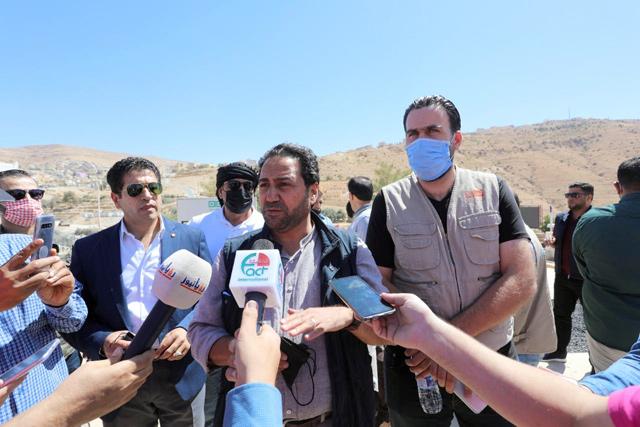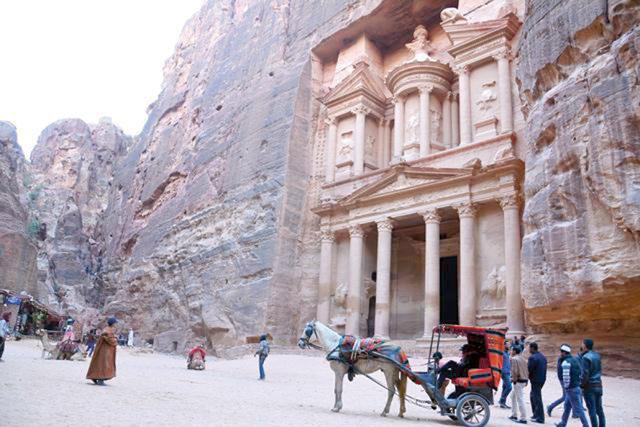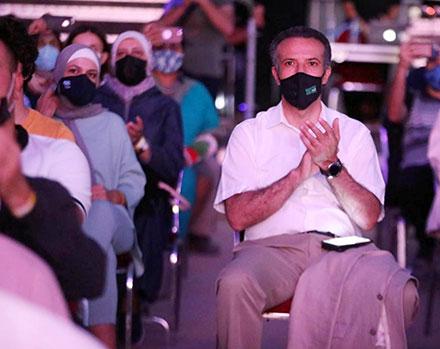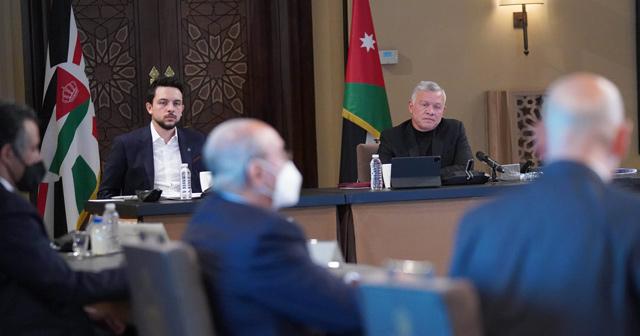You are here
More visitors to ‘Golden Triangle’ sets Jordan on path to tourism recovery — PDTRA chief
By Batool Ghaith - Sep 26,2021 - Last updated at Sep 27,2021

Chief Commissioner of Petra Development and Tourism Region Authority Suleiman Al Farajat speaks to journalists during a southern media tour, organised by the Ministry of Tourism and Antiquities and the Jordan Tourism Board (Photo courtesy of Methkal Almuhairat/JTB)
PETRA — The epidemiological situation in Jordan is encouraging in-bound tourism to Jordan’s “Golden Triangle”, Chief Commissioner of Petra Development and Tourism Region Authority (PDTRA) Suleiman Al Farajat said.
Farajat remark’s came during a welcoming ceremony on Thursday ahead of a three-day southern media tour, organised by the Ministry of Tourism and Antiquities and the Jordan Tourism Board, which ended on Saturday.
The tour included a slew of events in the “Golden Triangle”— Aqaba, Petra and Wadi Rum — as part of the “Urdun Jannah” programme.
Farajat stressed that tourism programmes help restore Petra’s place on the global tourism map.
“We are sending a positive message to the entire world regarding the health conditions in Jordan in combating the pandemic and thus encouraging tourist groups from different countries to come to Jordan and visit Petra and other tourist, archaeological and religious sites,” Farajat said.
Farajat indicated that the “Urdun Jannah” programme, launched to encourage domestic tourism, has significantly contributed to the recovery of the tourism sector in Petra.
The programme’s impact is also reflected on the recovery of other economic sectors, and the employment of Petra residents in tourism and service facilities, he added.
The pandemic has highlighted that more than 80 percent of the people in Petra, 235km south of Amman, depend on the tourism sector as their main and only source of income, according to Farajat.
“We are hoping for a full recovery and for tourist numbers to return to their rates as they were in 2019 and even more,” he added.
Farajat noted that September is essential in knowing the road of recovery is in sight. He indicated that most of the tourist hotels that closed during the pandemic have since reopened.
He also said that there is a plan to link the Wadi Musa area with the tourist street in Petra and to begin transporting visitors via electric cars.
The heritage village was opened as a new project, so that tourists could visit it without any costs added to the ticket price, he said.
“Our tourism product still needs more effort and promotion. The number of inbound tourists reached around one million in 2019. Petra currently receives around 500-600 tourists, which is a great number after the pandemic crisis,” Farajat said.
Farajat pointed out that the best tourism season for Petra is September to November.
“There will be low-cost flights subsidised by JTB in November, therefore, we expect the rates to double,” he continued.
Ethear, a Spanish tourist in Petra described the rose-red city as “magical”.
“Being here feels very special, we have learned a lot of valuable information about the culture and history of Petra,” she told The Jordan Times.
Mohammad Ismail, an Egyptian tourist, said that he was “mesmerised” when he first saw the treasury, Petra’s iconic façade.
“I have always wanted to visit Petra and I finally got the chance to book a visit and I am very happy. The people are very welcoming too,” he told The Jordan Times.
According to recent data, the number of non-Arab tourists who visited Petra in September reached about 8,700, which is 51 per cent of the total visitors. The number of Arab visitors reached 2,345, that is 13 percent of total visitors in September. The percentage of Jordanian visitors increased to 36 percent, with 6,200 visitors in September.
Related Articles
AMMAN — The “Urdun Jannah” programme has mitigated the impact of the COVID-19 pandemic in Jordan’s “Golden Triangle” — Aqaba, Petra and Wadi
AMMAN — The music, folklore, culture and arts events launched in Jordan’s "Golden Triangle" as part of the “Al Hawa Janoubi” (southern air)
AMMAN — His Majesty King Abdullah on Sunday reaffirmed the need to unify efforts towards the recovery of the tourism sector, and enhancing i














